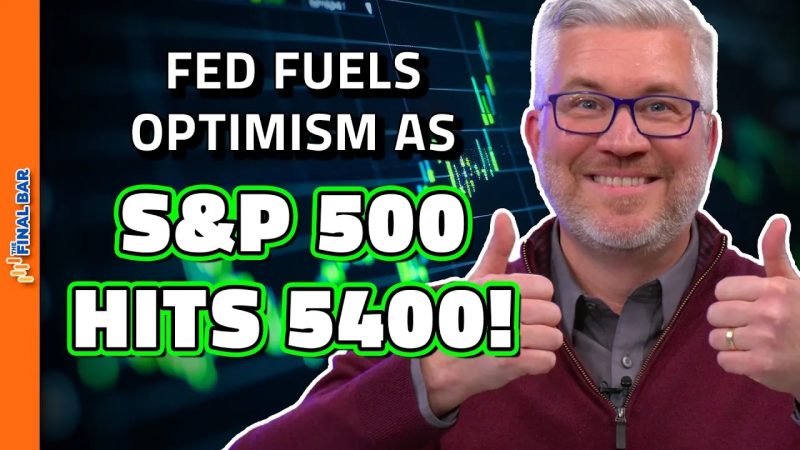The S&P 500, one of the most widely followed indexes in the world, breaching the 5400 mark is a significant event. The two contrasting viewpoints are that this is either a result of economic optimism, or it could signal irrational exuberance.
Economic optimism refers to the confidence in a strong and growing economy. The S&P 500 represents 500 large companies listed on the U.S. stock exchanges, and it is often considered a reliable indicator of the state of the U.S. economy. When the index reaches heights like 5400, it could indicate that investors are optimistic about economic growth, leading to higher corporate profits, consequently pushing up stock prices.
Over the past few years, the U.S. economy has seen significant growth factors, including robust job growth, low interest rates, tax reforms, advances in technology, and legislative policies that favor businesses. Such positive signs could push investors to pour money into the stock market, driving up the S&P 500.
Additionally, improved global economic outlook, advancements in technological innovation, and a shift towards a digital economy also contribute to this optimism. The S&P 500’s surge might be a reflection of increased globalization, multinational expansion by major firms, and the economic influence of emerging technologies.
On the other hand, the concept of irrational exuberance, a term coined by former Federal Reserve Chairman Alan Greenspan, refers to investor enthusiasm that drives asset prices higher than those assets’ fundamental value would justify. This can happen when investors, driven by a fear of missing out, start buying stocks indiscriminately. Too much optimism, without being grounded in economic fundamentals, can inflate stock prices and create a market bubble.
The S&P 500 reaching 5400 might be explained by this theory. The ultra-low interest rate environment makes bonds less attractive, pushing investors to riskier assets like stocks. This artificial demand can inflate stock prices beyond their true value.
Moreover, the role of retail investors and the ease of stock market access have also changed the investment landscape. The spread of commission-free trading apps and widespread access to financial information may have boosted investor confidence and participation, potentially inflating prices.
Despite the optimistic indicators, there are valid reasons to be cautious. Growing national debt, geopolitics, regulatory scrutiny on technology companies, and unpredictable black swan events like the COVID-19 pandemic can pose significant risks.
In conclusion, while the S&P 500 breaking the 5400 mark can be seen as a sign of economic optimism, it isn’t entirely unfathomable that this exuberance may be irrational. It serves as a poignant reminder for investors to balance between optimism and caution, recognizing the importance of grounded risk assessment and decision-making. Whether an emblem of robust economic growth or a warning sign of an overheating market, only time will tell.




